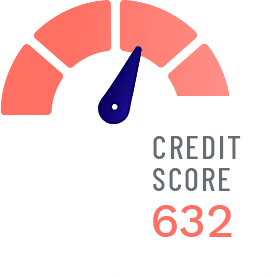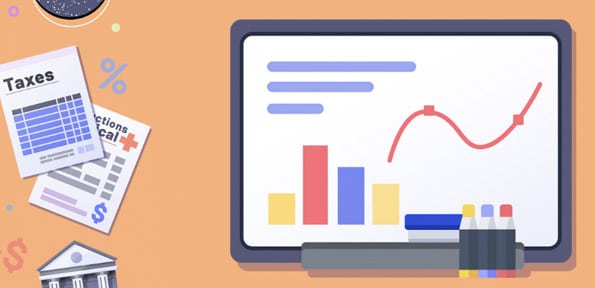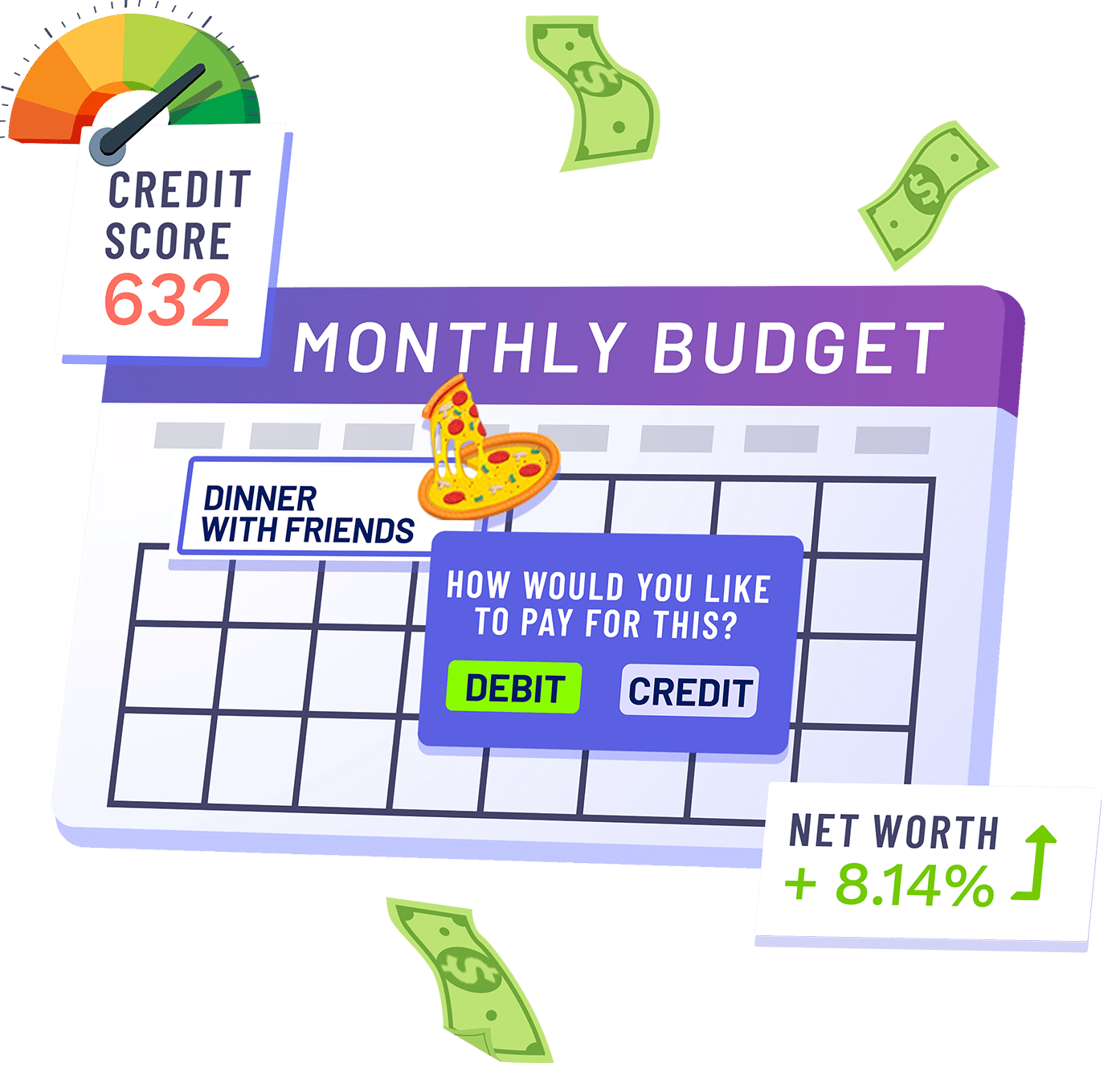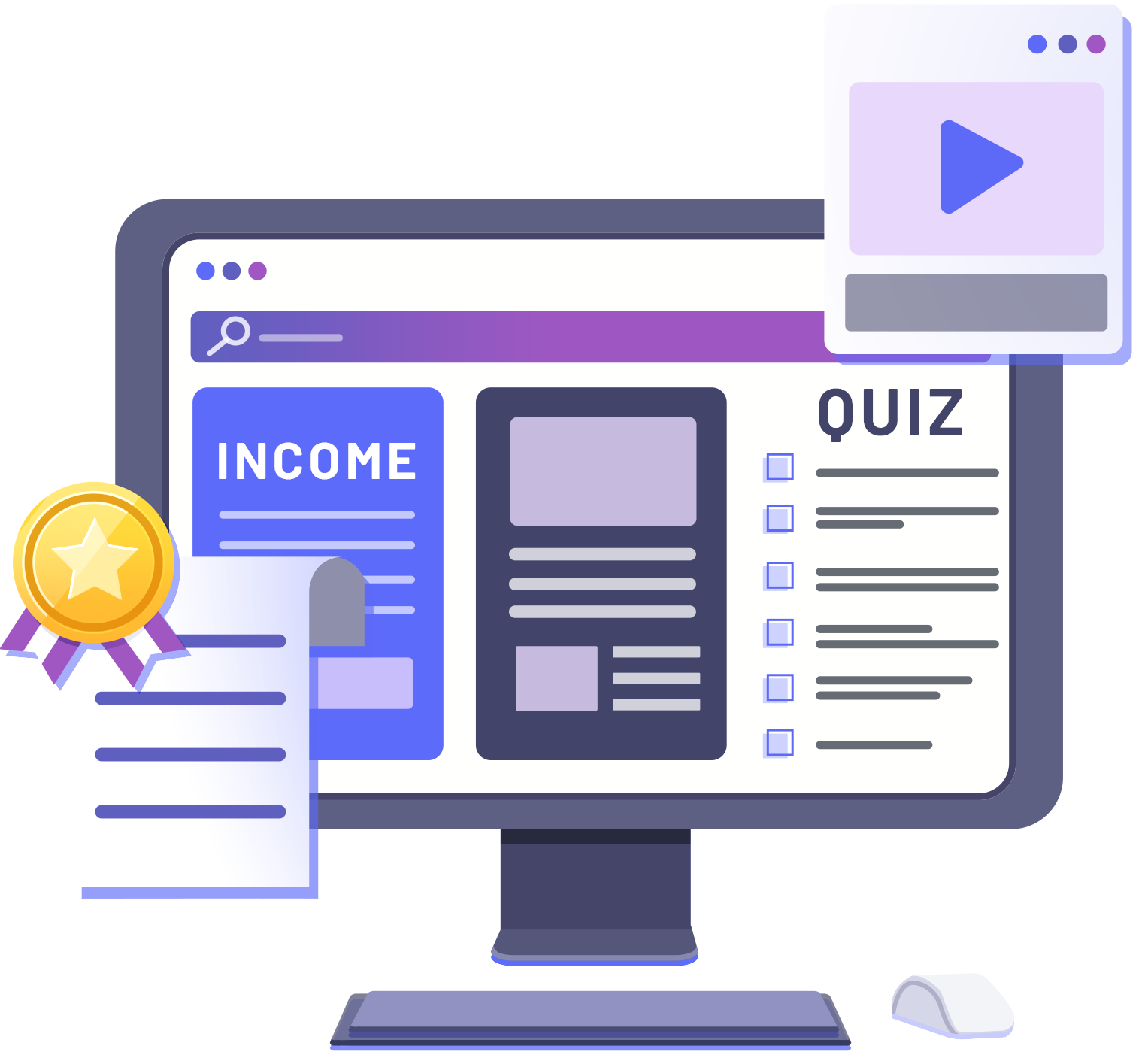| Personal Decision-Making | | | | | | |
| Define and give examples of economic wants. | Budget Game – Core Component
Lesson – Pay Yourself First
Lesson – Spending and Savings Plans | | | | | |
| Explain how every individual defines wants and needs differently. | Budget Game – Core Component
Lesson – Pay Yourself First
Lesson – Spending and Savings Plans | | | | | |
| Apply opportunity costs and trade-offs to personal decision making. | Budget Game – Core Component
Lesson – Pay Yourself First
Lesson – Spending and Savings Plans | | | | | |
| Apply the steps in a rational decision-making process to a situation involving an economic decision by an individual. | Budget Game – Core Component
Lesson – Pay Yourself First
Lesson – Spending and Savings Plans
Lesson – Budgeting and Spending Strategies | | | | | |
| Recognize the consequences of economic choices. | Budget Game – Core Component
Lesson – Pay Yourself First
Lesson – Spending and Savings Plans | | | | | |
| Differentiate between types of decisions and identify those for which a formal decision-making process should be used. | Lesson – Researching Spending
Lesson – Pay Yourself First
Lesson – Preparing for spending shocks | | | | | |
| Apply the decision-making process to various types of decisions at different stages of the life cycle. | Budget Game – Core Component
Stock Game – Core Component
Lesson – Planning Long Term Purchases
Lesson – Family Planning | | | | | |
| Apply the concept of marginalism (e.g., marginal utility) to choice making. | Budget Game – Core Component
Lesson – Opportunity Cost
Lesson – Building Wealth | | | | | |
| Analyze the effect of leading economic indicators on a personal financial plan. | Lesson – The Business Cycle
Lesson – The Importance of Interest Rates
Lesson – Inflation | | | | | |
| Analyze how ethics affect business and personal financial management decisions. | Lesson – Consumer rights and responsibilities
Lesson – Classifying Products and Services
Lesson – Ethics In Marketing | | | | | |
| Examine the impact of advertising, peer pressure, and family history on personal financial decisions. | Budget Game – Core Component
Lesson – Spending and Savings Plans | | | | | |
| Earning and Reporting Income | | | | | | |
| Identify various ways people earn a living. | Lesson – Income and Compensation | | | | | |
| Differentiate between earned and unearned income. | Budget Game – Core Component
Lesson – Income and Compensation | | | | | |
| Distinguish between income and wealth. | Budget Game – Core Component
Lesson – Income and Compensation
Lesson – Building Wealth
Lesson – What is Money? | | | | | |
| Identify sources of unearned income (e.g., transfer payments and gifts). | Lesson – Income and Compensation
Lesson – Taxation Overview | | | | | |
| Explain how types and availability of jobs are determined primarily by consumer demand in the market-oriented economy of the United States. | Lesson – Career Development
Lesson – Starting a Business
Lesson – Biggest Mistakes of Job Seekers | | | | | |
| Discuss how personal choices concerning human capital (e.g., experiences, technology, education/training, and other factors) influence income. | Budget Game – Core Component
Lesson – Income and Compensation
Lesson – Career Development | | | | | |
| Analyze the characteristics and requirements of occupations of interest, including entrepreneurial opportunities. | Lesson – Income and Compensation
Lesson – Career Development
Lesson – Staring a Business
Lesson – Work vs Study | | | | | |
| Differentiate between gross and net income. | Budget Game – Core Component
Lesson – Tax Filing and the Form 1040 | | | | | |
| Identify benefits as a component of total income. | Lesson – Income and Compensation | | | | | |
| Explain the various types of taxes and their impact on purchasing power. | Lesson – Taxation Overview
Lesson – Tax Filing and the Form 1040 | | | | | |
| Identify types of income other than wages (e.g., interest, rent, and profit) that people earn from their resources. | Lesson – Taxation Overview
Lesson – Tax Filing and the Form 1040
Lesson – Planning for Long-Term Purchases
Lesson – Preparing for Retirement | | | | | |
| Discuss how actors affect income from employment such as supply and demand, geographic location, level of education, type of industry, union membership, productivity, skill level, and work ethic. | Lesson – Income and Compensation
Lesson – Career Development
Lesson – Staring a Business
Lesson – Work vs Study
Lesson – Labor and Productivity | | | | | |
| Analyze the impact of sociological, economic, and technological changes on future jobs. | Lesson – Labor and Productivity
Lesson – The Business Cycle | | | | | |
| Compare compensation packages that include varying levels of wages and benefits. | Lesson – Income and Compensation | | | | | |
| Analyze how career choice, education, and skill affect income and goal attainment. | Lesson – Income and Compensation
Lesson – Career Development
Lesson – Preparing for Retirement
Lesson – Planning Long Term Purchases | | | | | |
| Describe the different types of taxes (e.g., progressive, regressive, and proportional) and how they can impact disposable income. | Lesson – Taxation Overview
Lesson – Tax Filing and the Form 1040
Lesson – Sales Tax | | | | | |
| Explore potential tax deductions and credits on a tax return. | Lesson – Common Tax Deductions | | | | | |
| Calculate personal tax liabilities for various types of taxes (e.g., property, income, sales, FICA, and Medicare). | Lesson – Tax Filing and the Form 1040 | | | | | |
| Explain the impact of taxes on personal financial planning. | Lesson – Taxation Overview | | | | | |
| Calculate net pay. | Budget Game – Core Component
Lesson – Tax Filing and the Form 1040 | | | | | |
| Investigate employee benefits and incentives. | Lesson – Employer and Employee Rights and Responsibilities
Lesson – Income and Compensation | | | | | |
| Describe information and required forms relevant to the completion of state and federal income tax forms. | Lesson – Tax Filing and the Form 1040 | | | | | |
| Managing Finances and Budgeting | | | | | | |
| Identify examples of short-term and long-term goals. | Lesson – Pay Yourself First
Planning Long Term Purchases
Lesson – Family Planning
Lesson – Preparing for Retirement | | | | | |
| Identify various sources of income for personal spending. | Budget Game – Core Component
Lesson – Spending and Savings Plans
Lesson – Budgeting and Spending Strategies | | | | | |
| Identify ways in which individuals and families obtain financial resources. | Lesson – Unemployment and other programs
Lesson – Consumer rights and responsibilities
Lesson – When to hire a tax professional
Lesson – Debt Management Services | | | | | |
| Define fixed and variable expenses. | Budget Game – Core Component
Lesson – Spending and Savings Plans | | | | | |
| Categorize expenses as fixed or variable. | Budget Game – Core Component
Lesson – Spending and Savings Plans | | | | | |
| Classify periodic expenses as fixed or variable. | Budget Game – Core Component
Lesson – Spending and Savings Plans | | | | | |
| Determine discretionary income in a spending plan. | Budget Game – Core Component
Lesson – Spending and Savings Plans
Lesson – Budgeting and Spending Strategies | | | | | |
| Evaluate a personal spending plan for consumer spending to determine individual financial goals. | Budget Game – Core Component
Lesson – Spending and Savings Plans
Lesson – Budgeting and Spending Strategies | | | | | |
| Construct and use a personal spending/savings plan and evaluate it according to short- and long-term goals. | Budget Game – Core Component
Lesson – Spending and Savings Plans
Lesson – Budgeting and Spending Strategies
Lesson – Preparing For Retirement
Lesson – Planning Long Term Purchases | | | | | |
| Discuss reasons why income and spending patterns change throughout the life cycle for the typical person and family. | Lesson – Family Planning
Lesson – Analyzing Consumer Behavior | | | | | |
| Illustrate how income and spending patterns change through the life cycle for the typical person and family. | Lesson – Family Planning
Lesson – Analyzing Consumer Behavior | | | | | |
| Saving and Investing | | | | | | |
| Describe motivations for saving and the means by which they save. | Budget Game – Core Component
Lesson – Spending and Savings Plans
Lesson – Building Wealth
Lesson – Preparing For Retirement | | | | | |
| Identify the opportunity costs of saving. | Budget Game – Core Component
Lesson – Budgeting | | | | | |
| Differentiate between saving and investing. | Budget Game – Core Component
Stock Game – Core Component
Lesson – Building Wealth
Lesson – Investing Strategies | | | | | |
| Compare simple and compound interest. | Lesson – Importance of Interest Rates
Activity – Use the Compound Interest Calculator | | | | | |
| Describe the advantages and disadvantages of various savings and investing plans. | Lesson – Investing Strategies
Lesson – Spending and Savings Plans | | | | | |
| Describe how financial institutions use funds deposited as savings and/or investment by customers. | Lesson – Banks, Credit Unions, and Savings and Loans | | | | | |
| Identify the risk/return trade-offs for saving and investing. | Budget Game – Core Component
Stock Game – Core Component
Lesson – Risk
Lesson – Investing Strategies
Activity – Use the Investment Return Calculator | | | | | |
| Analyze the power of compounding and the importance of starting early in implementing a plan of saving and investing. | Activity – Use the Compound Interest Calculator
Activity – Use the Saving to be a Millionaire Calculator | | | | | |
| Apply criteria for choosing a savings or investment instrument (e.g., market risk, inflation risk, interest rate risk, political risk, liquidity, and minimum amount needed for investment). | Lesson – Risk
Lesson – Investing Strategies
Lesson – Inflation
Lesson – The Business Cycle | | | | | |
| Distinguish between the rights and responsibilities of owners of debt and equity investments. | Lesson – What are Bonds
Lesson – What is a Stock?
Lesson – Bankruptcy | | | | | |
| Explain why individuals should change their savings and investing plans throughout their life cycles. | Investing101 Certification
Lesson – Investing Strategies
Lesson – Preparing for Retirement
Lesson – Family Planning | | | | | |
| Differentiate between interest, dividends, capital gains, and rent from property. | Lesson – Investing Strategies
Lesson – Income and Compensation
Lesson – Taxation Overview | | | | | |
| Describe how saving and investing influence economic growth (capital formation). | Budget Game – Core Component
Stock Game – Core Component
Activity – Use the Investment Return Calculator
Lesson – Building Wealth | | | | | |
| Evaluate the tax incentives available for certain investments. | Lesson – Taxation Overview
Lesson – Preparing for Retirement | | | | | |
| Identify costs for investments. | Lesson – Taxation Overview
Lesson – Common Tax Additions | | | | | |
| Identify income sources for investments. | Lesson – Investing Strategies | | | | | |
| Examine the role of saving and investing in creating a financial plan. | Budget Game – Core Component
Lesson – Budgeting
Lesson – Pay Yourself First | | | | | |
| Develop financial goals for the future based on one’s lifestyle expectations and career choices. | Lesson – Preparing for Retirement
Lesson – Career Development
Lesson – Family Planning | | | | | |
| Contrast the impact of simple interest vs. compound interest on savings. | Activity – Use the Compound Interest Calculator
Lesson – The Importance of Interest Rates | | | | | |
| Explain how and why the stock market functions. | Stock Game – Core Component
Lesson – What is the New York Stock Exchange? | | | | | |
| Examine the fundamental workings of the Social Security System and the system’s effects on retirement planning. | Lesson – Preparing for Retirement
Lesson – Unemployment and other programs | | | | | |
| Apply the concept of Time Value of Money. | Lesson – Time Value of Money | | | | | |
| Buying Goods and Services | | | | | | |
| Apply a rational decision-making process to personal buying decisions. | Budget Game – Core Component
Lesson – Budgeting and Spending Strategies
Lesson – Spending and Savings Plans | | | | | |
| Distinguish between goods and services. | Budget Game – Core Component
Lesson – Classifying Products and Services | | | | | |
| Apply comparison shopping practices. | Lesson – Researching Spending | | | | | |
| Identify alternative sources for purchases (e.g., e-malls, retail stores, and catalogs). | Lesson – Researching Spending | | | | | |
| Identify laws that protect the rights of the consumer. | Lesson – Consumer rights and responsibilities | | | | | |
| Discuss various ways competition among sellers benefits the consumer. | Lesson – Benefits of Competition | | | | | |
| Describe reasons and research why there are variances in price for a given item purchased from different providers. | Lesson – Supply and Demand Examples in the Stock Market | | | | | |
| Use reliable consumer resources to collect information for making buying decisions about durable and nondurable goods. | Lesson – Researching Spending | | | | | |
| Describe consumer rights, responsibilities, and remedies, giving examples of each. | Lesson – Consumer rights and responsibilities | | | | | |
| Compare the costs and benefits of purchasing, leasing, and renting. | Activity – Use the Car Loans Calculator
Activity – Use the Buy vs Lease Calculator
Activity – Use the Home Budgeting Calculator
Lesson – Mortgages
Lesson – Buying a car | | | | | |
| “Describe consumer assistance services provided by public and private organizations (e.g., government, the Better
Business Bureau, and manufacturers).” | Lesson – Consumer rights and responsibilities | | | | | |
| Examine the impact of advertising and marketing on consumer demand and decision making in the global marketplace. | Lesson – Spending and Savings Plans | | | | | |
| Research consumer advocacy groups that address consumer rights and responsibilities and describe how an individual can participate. | Lesson – Consumer rights and responsibilities | | | | | |
| Calculate the costs of utilities, services, maintenance, and other expenses involved in independent living. | Budget Game – Core Component | | | | | |
| Describe the role that supply and demand and market structure play in determining the availability and price of goods and services | Lesson – Supply and Demand Examples in the Stock Market | | | | | |
| Explain how a consumer can identify and report fraudulent behavior and practice. | Lesson – Protecting Against Fraud | | | | | |
| Banking and Financial Institutions | | | | | | |
| Identify various types of financial institutions. | Lesson – Banks, Credit Unions, and Savings and Loans | | | | | |
| List the basic products and services provided by financial institutions (e.g., savings, checking, credit cards, loans, safe deposit boxes). | Lesson – Banks, Credit Unions, and Savings and Loans | | | | | |
| Identify the rights and responsibilities associated with using a checking account. | Lesson – Banks, Credit Unions, and Savings and Loans | | | | | |
| Describe the steps involved in opening and using a checking account. | Lesson – Banks, Credit Unions, and Savings and Loans
Lesson – What is Money? | | | | | |
| Compare and contrast the different types of checking accounts offered by various financial institutions. | Lesson – Banks, Credit Unions, and Savings and Loans | | | | | |
| Differentiate among types of electronic monetary transactions (e.g., debit cards, ATM, and automatic deposits/payments offered by various financial institutions. | Lesson – What is Money?
Lesson – Debit Cards
Lesson – Credit Cards | | | | | |
| Identify new and emerging methods of transferring money (e.g., PayPal, Zello, Venmo, ApplePay) and how they affect financial institutions. | Lesson – What is Money? | | | | | |
| Identify other means of transferring funds (e.g., money orders and certified checks). | Lesson – What is Money? | | | | | |
| Evaluate products and services and related costs and fees associated with financial institutions in terms of personal banking needs. | Lesson – Banks, Credit Unions, and Savings and Loans
Lesson – What is Money? | | | | | |
| Describe and demonstrate the steps involved in the bank reconciliation process. | Lesson – Reconciling Accounts | | | | | |
| Compare costs and benefits of online and traditional banking. | Lesson – Banks, Credit Unions, and Savings and Loans
Lesson – What is Money?
Lesson – Credit Cards | | | | | |
| Analyze privacy and security issues associated with financial transactions. | Lesson – Risk
Lesson – Protecting Against Fraud | | | | | |
| Explain how certain historical events (e.g., the Depression, 1980s savings and loan crisis, September 11, housing market crisis of 2008, and the health pandemic of 2020) have influenced the banking system and other financial institutions. | Lesson – Stock Market Crash of 1929 | | | | | |
| Identify the functions of the Federal Reserve System. | Lesson – What is the Federal Reserve? | | | | | |
| Using Credit | | | | | | |
| Explain when and why borrowing is used for the purchase of goods and services. | Budget Game – Core Component
Lesson – Using Credit
Lesson – Good Debt, Bad Debt | | | | | |
| Describe the risks and responsibilities associated with using credit. | Lesson – Using Credit
Lesson – Credit Cards
Lesson – Good Debt, Bad Debt | | | | | |
| Identify the opportunity cost of credit decisions. | Lesson – Good Debt, Bad Debt
Lesson – Managing Debt | | | | | |
| Identify methods of establishing and maintaining a good credit rating. | Budget Game – Core Component
Lesson – Credit Reports | | | | | |
| Determine advantages and disadvantages of using credit. | Budget Game – Core Component
Lesson – Credit Reports
Lesson – Using Credit | | | | | |
| Describe the process to establish credit. | Budget Game – Core Component
Lesson – Credit Reports
Lesson – Using Credit | | | | | |
| Evaluate the various methods of financing a purchase. | Lesson – Short-Term Financing | | | | | |
| Define interest as a cost of credit and explain why it is charged. | Lesson – Using Credit
Lesson – Credit Cards
Lesson – The Importance of Interest Rates | | | | | |
| Analyze credit card features and their impact on personal financial planning. | Lesson – Credit Cards
Lesson – Using Credit | | | | | |
| Explain how the amount of principal, the period of the loan, and the interest rate affect the amount of interest charged. | Lesson – Credit Cards
Lesson – Using Credit | | | | | |
| Explain why the interest rate varies with the amount of assumed risk. | Lesson – Using Credit
Lesson – Credit Cards
Lesson – The Importance of Interest Rates | | | | | |
| Explain the need for a sound credit rating. | Lesson – Credit Reports
Lesson – Mortgages | | | | | |
| Calculate a payment schedule for a loan. | Activity – Use the Credit Card Payments Calculator | | | | | |
| Calculate interest based on various calculation methods. | Activity – Use the Credit Card Payments Calculator
Activity – Use the Car Loans Calculator
Activity – Use the Compound Interest Calculator | | | | | |
| Describe how to improve one’s credit score. | Budget Game – Core Component
Lesson – Credit Reports
Lesson – Using Credit | | | | | |
| Analyze various sources and types of credit (e.g., short�and long-term) and related costs. | Lesson – Good Debt, Bad Debt
Lesson – Short-Term Financing | | | | | |
| Select an appropriate form of credit for a particular buying decision. | Lesson – Managing Debt
Lesson – Mortgages
Lesson – Good Debt, Bad Debt
Activity – Use the Buy vs Lease Calculator | | | | | |
| Compare and contrast the various aspects of credit (e.g., APR, grace period, incentive buying, methods of calculating interest, and fees). | Lesson – Using Credit
Lesson – Credit Cards
Lesson – Mortgages | | | | | |
| Explain credit ratings and credit reports and describe why they are important to consumers. | Lesson – Credit Reports
Lesson – Mortgages | | | | | |
| Describe the relationship between a credit rating and the cost of credit. | Lesson – Credit Reports | | | | | |
| Identify strategies for effective debt management. | Lesson – Managing Debt
| | | | | |
| Analyze the sources of assistance for debt management. | Lesson – Debt Management Services
Lesson – Consolidating Debt | | | | | |
| Research rights and responsibilities of consumers according to credit legislation (e.g., truth-in-lending, fair credit reporting, equal credit opportunity, and fair debt collection). | Lesson – Credit Cards | | | | | |
| Compare the legal aspects of different forms of credit (e.g., title transfer, responsibility limits, collateral requirements, and co-signing). | Lesson – Using Credit | | | | | |
| Explain the implications of foreclosure and bankruptcy. | Lesson – Bankruptcy | | | | | |
| Protecting Against Risk | | | | | | |
| Identify risks in life and how to gain protection against the consequences of risk. | Lesson – Renter’s Insurance
Lesson – Car Insurance
Lesson – Health Insurance | | | | | |
| Define basic insurance terms (e.g., deductible, premium, peril, risk). | Lesson – Renter’s Insurance
Lesson – Car Insurance
Lesson – Health Insurance | | | | | |
| Explain how all types of insurance are based on the concept of risk sharing and statistical probability. | Lesson – Renter’s Insurance
Lesson – Car Insurance
Lesson – Health Insurance
Lesson – Life Insurance | | | | | |
| Evaluate insurance as a risk management strategy. | Lesson – Life Insurance
Lesson – Risk
Lesson – Car Insurance | | | | | |
| “Identify the type of insurance associated with different types of risk (e.g., automobile, personal and professional
liability, home and apartment, health, life, long-term care, disability).” | Lesson – Renter’s Insurance
Lesson – Car Insurance
Lesson – Health Insurance
Lesson – Life Insurance
Lesson – Home Owner’s Insurance | | | | | |
| Explain why insurance needs change throughout the life cycle. | Lesson – Renter’s Insurance
Lesson – Car Insurance
Lesson – Health Insurance
Lesson – Life Insurance
Lesson – Home Owner’s Insurance | | | | | |
| Identify various suppliers of insurance (e.g., public and private). | Lesson – Renter’s Insurance
Lesson – Car Insurance
Lesson – Health Insurance
Lesson – Life Insurance
Lesson – Home Owner’s Insurance | | | | | |
| Explain the role of insurance in financial planning as a wealth-building and wealth preservation tool. | Lesson – Life Insurance
| | | | | |
| Explain the legal expectations for certain insurances (e.g., automobile, health, homeowners). | Lesson – Car Insurance
Lesson – Health Insurance
Lesson – Home Owner’s Insurance | | | | | |
| Develop recommended insurance coverage for individuals/families for various risks and different income and/or age levels. | Lesson – Renter’s Insurance
Lesson – Car Insurance
Lesson – Health Insurance
Lesson – Life Insurance
Lesson – Home Owner’s Insurance | | | | | |
| Develop a plan for family financial security (e.g., secure storage of documents, cash reserve, household inventory, medical records retention) in case of a disaster, after which an individual may need to reestablish identity. | Lesson – What are Financial Records?
Lesson – Protecting Against Fraud | | | | | |
| Examine ways to minimize danger and ramifications of identity theft. | Lesson – Protecting Against Fraud | | | | | |
| Demonstrating Knowledge of Financing Postsecondary Education and Training | | | | | | |
| Identify costs and benefits of postsecondary education. | Lesson – Work VS Study
Lesson – Student Loans | | | | | |
| “Describe benefits, eligibility requirements, and tax implications of state-sponsored tax-advantage-qualified tuition plans as investment options for postsecondary
education.” | Lesson – Student Loans | | | | | |
| Identify the multiple pathways to postsecondary education and career preparedness. | Lesson – Student Loans
Lesson – Career Development
Lesson – Work or Study
Lesson – Starting a Business | | | | | |
| Identify sources of postsecondary education funding. | Lesson – Student Loans | | | | | |
| Identify the purpose of the Free Application for Federal Student Aid (FAFSA) to determine eligibility for grants, scholarships, and loans and the essential information needed to complete it. | Lesson – Student Loans | | | | | |
| Describe types of scholarships and identify scholarship scams. | Lesson – Student Loans | | | | | |
| Examine types of student loans, including federal and private, and identify the associated risks. | Lesson – Student Loans | | | | | |
| Examine the requirements to remain eligible for financial aid. | Lesson – Student Loans | | | | | |
| Describe types of aid which do not require repayment, including federal, state, and institutional grants. | Lesson – Student Loans | | | | | |
| Explain repayment requirements and options for student loans. | Lesson – Student Loans | | | | | |
| Describe the options for borrowers struggling to make payments and the consequences of failure to repay student loans. | Lesson – Student Loans
Lesson – Bankruptcy | | | | | |












